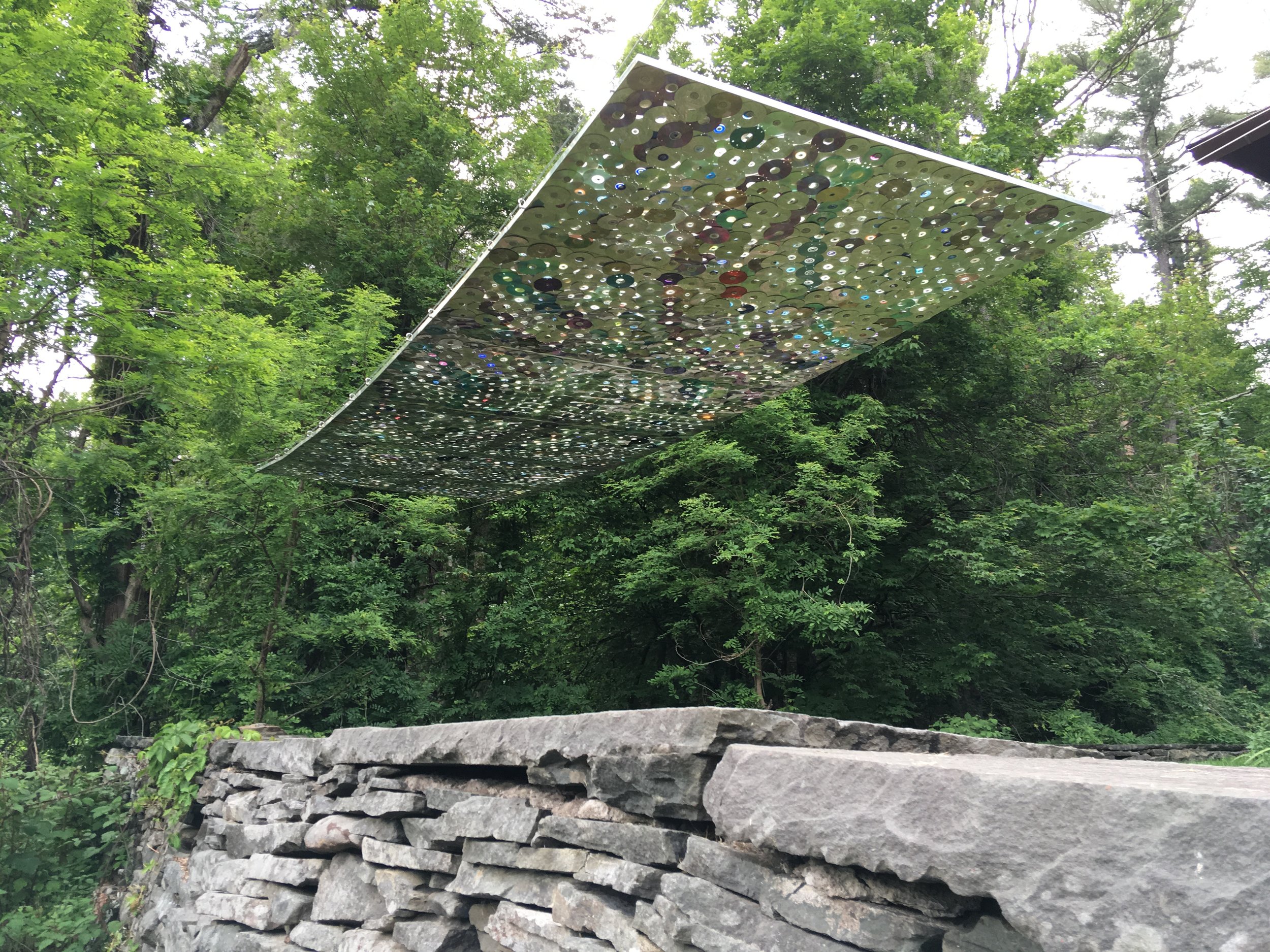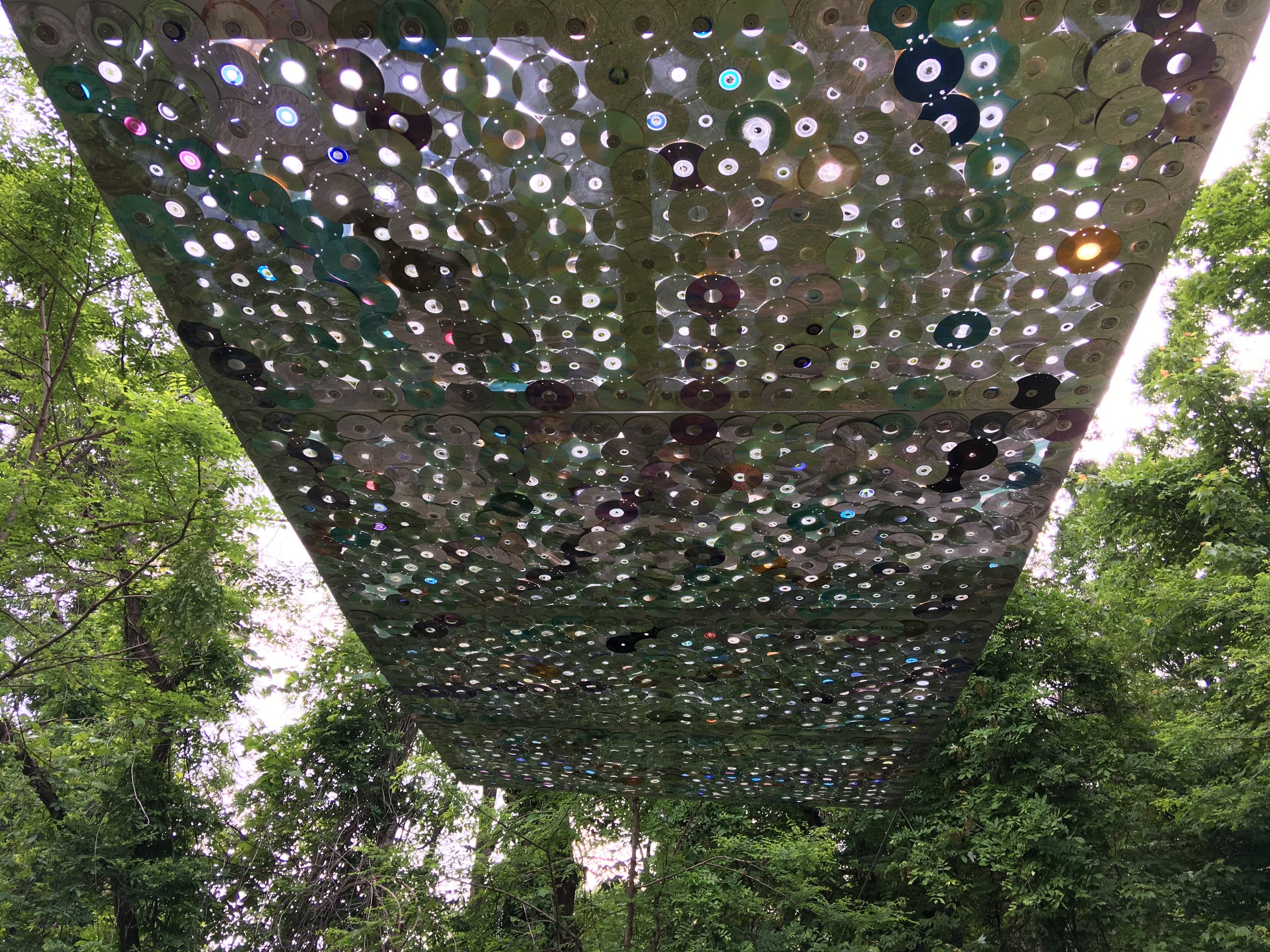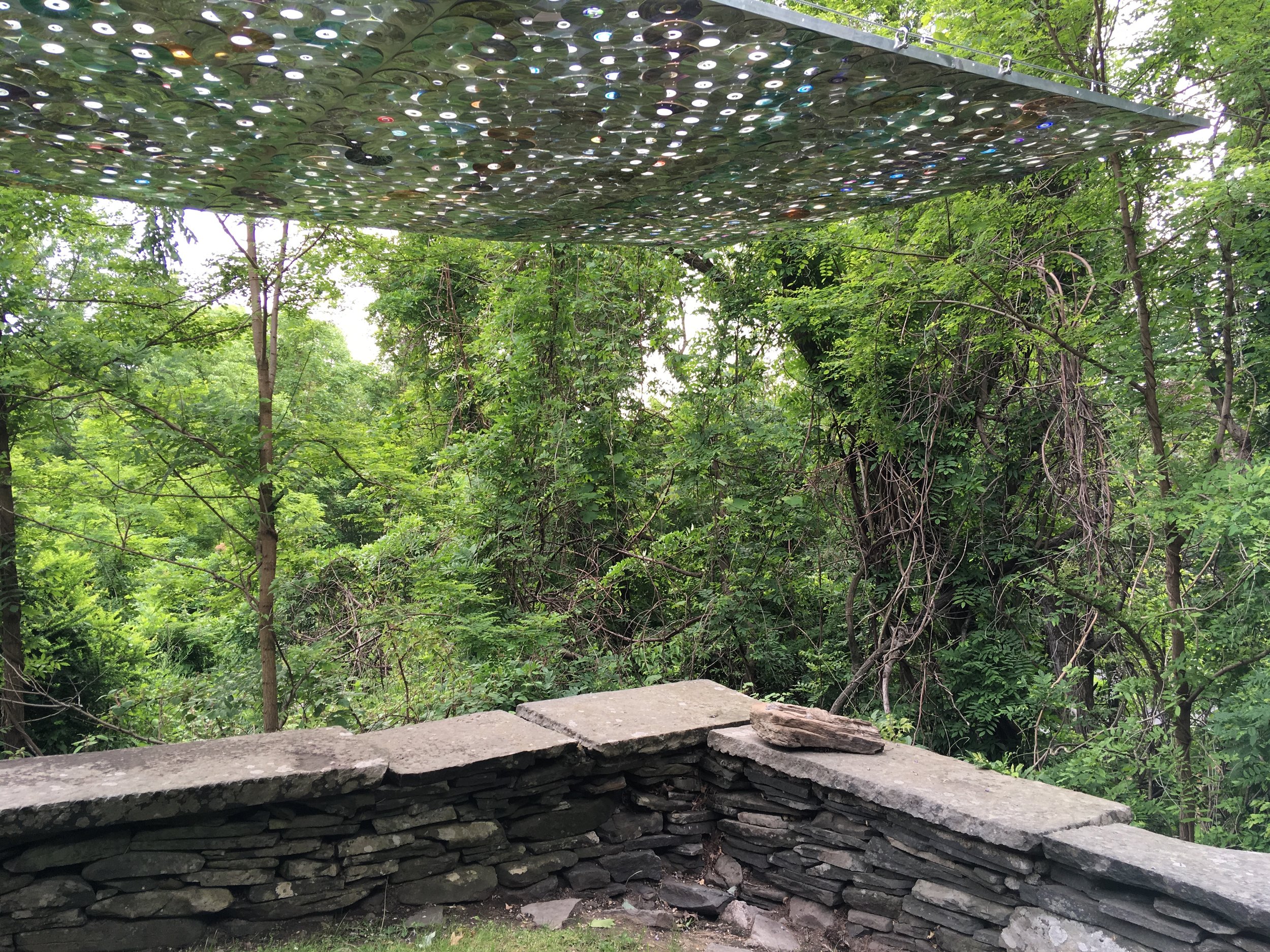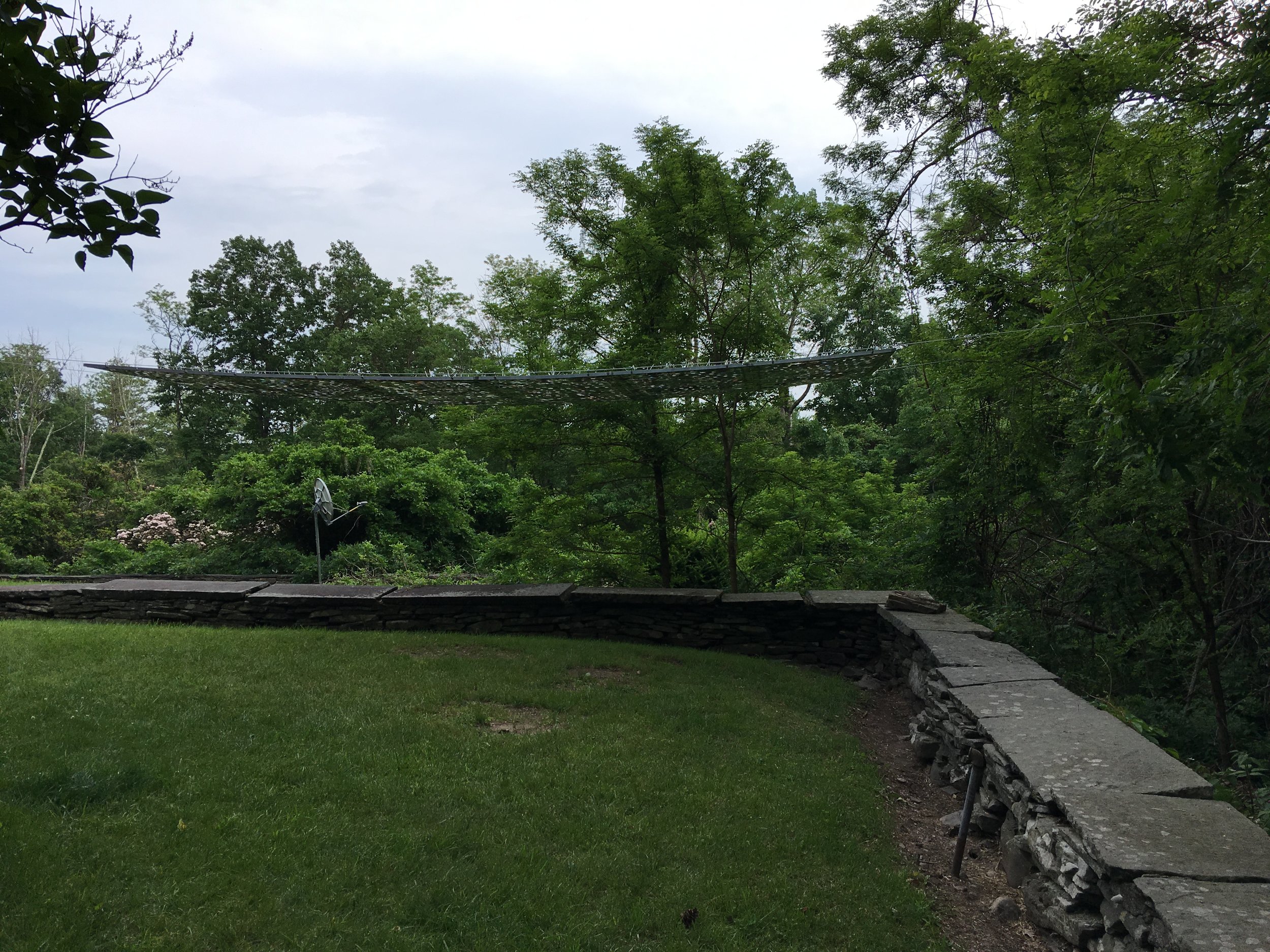Lift, 2019
Woodstock Byrdcliffe Guild, Woodstock, New York
Juror and Curator: Alan Baer
July 13, 2019 through November 3, 2019





Lift, 2019
7ft x 21ft
Suspended by cable, this installation hovers above the stone wall as if a ceiling to a room in the woods. The colors of CDs and DVDs curve and spiral above head, but the mosaic ceiling almost disappears when viewed from the side.
This project was supported by a grant from the Texas A&M University - Corpus Christi Division of Research and Innovation.
PSYCH OUT!!! - Psychedelic Outdoor Sculpture Show at Byrdcliffe Art Colony
The Woodstock Byrdcliffe Guild, located in Woodstock, NY, invited artists working in 3D materials suitable for outdoor installation to submit proposals for PSYCH OUT!!!
The PSYCH OUT!!! outdoor group exhibition will take place on the grounds of Byrdcliffe, founded in 1902 and the site of the original Woodstock art colony. The exhibition commemorates the 50th anniversary of the legendary Woodstock Music Festival: "An Aquarian Exposition: 3 Days of Peace & Music," which was held August 15 to August 18, 1969.
Isaac Abrams, whose New York City gallery Coda first exhibited psychedelic art in 1965, will participate in the exhibition as a special guest artist along with artists whose proposals are accepted. Isaac himself started making art in the psychedelic mode soon after the ground-breaking Coda exhibition. On August 24, 2019, Isaac Abrams will present a range from his lifetime body of work in conversation with critic and curator Carlo McCormick, who has followed Isaac's art for many years.
Curator: Alan Baer
Alan Baer is an architect with exhibition design experience and served on the exhibition committee of the Woodstock Byrdcliffe Guild from 2006 to 2014. He helped to organize Byrdcliffe events, "Talking Tongues and other Organs" and "Linda Montano Endures as Bob Dylan on his 73rd Birthday". He assisted curator Linda Weintraub with the Ahoy! Where Lies Henry Hudson? exhibition. And, he curated Quick, Down & Dirty and The Sky is Falling! In 1982, in Cincinnati, Alan curated the Architects, Incognito, Anonymous exhibition at CAGE Gallery (Cincinnati Artists Group Effort). He maintains a private architectural practice in Kingston, NY.
Curatorial Statement
A pivotal moment for psychedelics began on "Bicycle Day," April 19, 1943, when Albert Hofmann, who discovered LSD, ingested it and then observed the effects of the newly discovered drug while riding his bike in Basel, Switzerland, giving the world its first documented LSD trip.
What followed in the late 1960s was not just an art movement, but a countercultural phenomenon in terms of correspondence with rock music, literature, underground comics, and protest against mainstream politics of the time. Dropping acid and getting high on magic mushrooms became gateways to bend the mind, expand consciousness, and tap the illusive unconscious. Thinking back on the time period, 50 years ago, complete with political turmoil, I recall many who viewed the movement as escapist. But today, I see it as having been the best vehicle to get closer to sanity and a truer understanding of the workings of the world and the broader cosmos.
Bob Dylan once said: "Yesterday's just a memory, tomorrow is never what it's supposed to be." Applying this adage to cultural phenomena pretty well sums up my dilemma of wanting to honor the original psychedelic art movement and rightfully acknowledge and celebrate its somewhat blurry influence on everything that has come later. Dylan's statement might be perceived as inherently self-critical, in terms of time: suggesting a "lamentation" of a period gone by, complete with the notion that its relevance is somehow in question, and owning up to the universal uncertainty of the future, and even the premise of disconnect between the past and the future. Any form of dialogue between what was and what will be has poignancy, especially in the current climate of cultural and political discord, when the whole notion of re-writing the past for convenience becomes a focus of our collective attention and scrutiny.
After some deep soul searching, I say: let's allow ourselves to "time trip" in a way that would make Billy Pilgrim and Montana Wildhack (and Kurt Vonnegut) proud. This exhibition should be all about finding that "wormhole" out there in the universe, re-connecting the past, present, and future in a way that's meaningful for all who participate. I suppose I am looking for an elusive common thread that might provide opportunities for selected works to speak to one another, but without preconceived notions that all must fit into the same jigsaw puzzle. Overall, the more important mission should be to celebrate, rediscover anew, and tap into all that's outtasight!